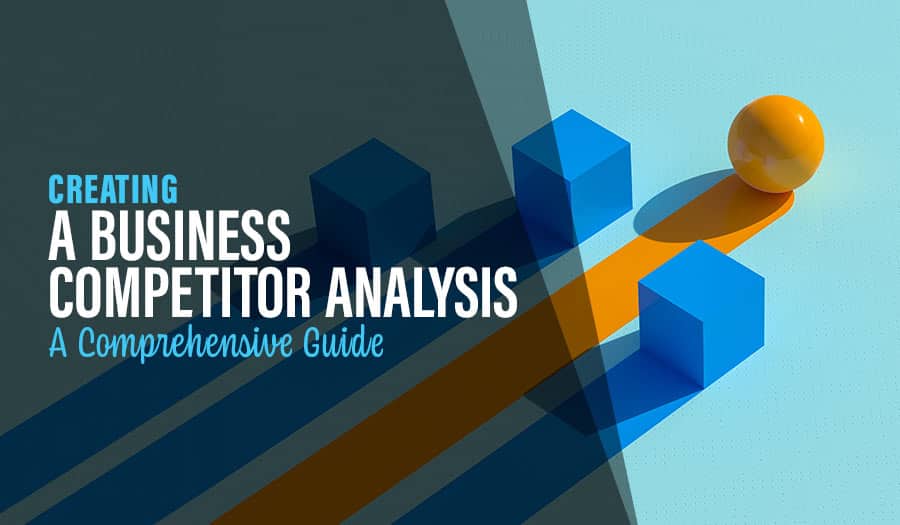Pricing your ecommerce products is a critical decision that you must make as a business owner. However, determining the best product price is difficult. The price you set affects demand, profits margins, cash flow and the expenses your business can manage to cover.
Unlike before, customers in this digital era are well informed about product quality and value. Online shoppers are also more sensitive to prices since their goal is to maximise value for their money.
According to research, a slight price variation can increase or lower profits by approximately 20% to 50%. Your prices are not just numbers; they reflect how you value your customers and view competitors. It’s, therefore, crucial to have a well-thought-out pricing strategy.
This article will discuss how to price Ecommerce products and analyse the top pricing strategies.
What Is an Ecommerce Pricing Strategy?
A pricing strategy is a plan of action that business owners use to determine the ideal prices for their products. By implementing the best strategy, you maximise profits while still maintaining a competitive edge in the market.
There are numerous pricing strategies that you can employ in your ecommerce business. However, your choice should be based on factors like sales, competition, customer preference, and demand.
Pricing Basic Considerations
Besides profits, you should consider the financial stability, business identity and brand when pricing your products. However, it would be best if you first did the math.
Every business incurs production, marketing and distribution costs. However, suppose you manage to cut these expenses without sacrificing the quality and value of your products. In that case, your company wins -this means you can sell the goods at affordable prices and still make reasonable profits.
Unfortunately, if your expenses go up, your profits go down.
Regardless of the type of products you sell, using a strategy that grows your business and boosts profits in the long run is key.
There is no one-size-fits-all in ecommerce pricing. Instead, you must find out what appeals to your potential customers and choose a method that fits your online business. You can also combine several strategies to achieve the best results.
How To Choose The Best Pricing Strategy
- Identify Your Ideal Customer
- Conduct Market Research
- Build a Behavioural Profile
- Analyse Customer Behaviours
How To Choose The Best Pricing Strategy
Online shoppers spend hours on different online stores and compare prices before purchasing. A suitable pricing method can impact comparison engines and SEO and direct potential customers to your page. So how can you determine the best strategy for your business?
1. Identify Your Ideal Customer
Your ideal customers are buyers with the financial ability and desire to purchase your products. Preferably, these are people who can help you market your products to other potential customers.
You can use existing market data to identify your ideal customer if you are new in the industry. And if you have been in business for a long time, you probably have a list of loyal and valuable customers.
2. Conduct Market Research
Market research is one of the best ways to determine the best pricing structure for your online business. Interact with your target audience and inquire how much they would pay for your product and how much they spend on similar goods in the market.
In addition, find out what makes your existing customers a good fit for your brand. Then, initiate a conversation about why they prefer your products. While at it, let them know that your research aims to improve your business. Offering incentives is also a great way to encourage feedback.
3. Build a Behavioural Profile
Use the information you gathered during your market research to build a behavioural profile. For example, identify your customers’ connection to your brand, needs, and responsiveness. Also, include their preferences with regards to social media and communication channels.
A behavioural customer profile helps you understand your potential customers’ requirements, pain points and environment.
4. Analyse Customer Behaviours
Online shoppers’ behaviours include their purchasing habits and factors that impact their purchase decisions. Understanding these behaviours will help you make decisions that align with your target audience’s mindset.
Online customer behaviours often change with advanced technology. For example, today, most users prefer efficient online stores and prompt delivery options.
Besides convenience, people choose online shopping due to lower prices. They abandon a purchase if they come across a similar product offered at a lower price on a different site.
However, some customer behaviours never change. For instance, investing in a high-quality e-commerce website attracts potential customers and builds trust.
Top 5 Strategies on How to Price Ecommerce Products
- Cost-Based Pricing Strategy
- Value-Based Pricing Strategy
- Competition-Based Pricing Strategy
- Dynamic Pricing
- Bundle Pricing
Top 5 Strategies on How to Price Ecommerce Products
1. Cost-Based Pricing Strategy
A cost-based pricing strategy involves determining the price of a product based on its production, manufacturing and distribution cost.
This strategy is ideal since it covers overheads and production costs and guarantees profits.
Cost-based pricing businesses use the production cost to determine a price range for a particular product. They then set a price that lies between the price ceiling and floor.
There are two types of cost-based pricing strategies; break-even and cost-plus pricing.
In cost-plus pricing, the seller adds a profit percentage to the production cost of one product when calculating its selling price.
On the other hand, break-even pricing involves determining the number of units that must be sold to break even rather than focusing on one unit.
Advantages
- You can predict turnover
- It features stable prices that can win customer’s trust
- Price calculations are straightforward
Drawbacks
- It doesn’t consider the impact of customer demand on price
- Ignores actions by competitors
- Can cause inefficiencies in manufacturing, supply and distribution
2. Value-Based Pricing Strategy
A value-based pricing strategy is a pricing concept based on the product’s value to buyers. In simpler terms, it involves setting a price that potential online shoppers are willing to pay.
This consumer-centric method relies on customer behaviours, communication and market research.
With a value-based pricing model, you can sell your products at different prices to different buyers. For instance, you can use consumer data segmentation to determine customers buying behaviour then set prices appropriately.
Additionally, adopt personalised communication, for instance, through offering targeted promotions and discounts and alerting customers when you restock their favourite product. It’s an effective technique that you can apply to know your customers and fulfil their individual needs.
Advantages
- Flexibility to sell products at different prices
- Increases product sales
- Attracts new buyers through differentiation
Disadvantages
- Ignores product cost
- Ignores competitors’ behaviours
- It involves so much analysis and research
3. Competition-Based Pricing Strategy
A competition-based pricing strategy involves setting prices based on the cost of similar goods in the market. This method is ideal in a competitive market where buyers judge identical items by price.
This pricing method allows you to change your product price depending on market demand. For instance, you can set lower prices than your competitors to attract price-sensitive customers. However, this technique is only feasible if you lower your products’ production and overhead costs.
You can also set higher prices provided you justify the cost by offering high-quality products. Additionally, you can settle for a matching price but stand out through unique marketing techniques.
Applying this strategy means monitoring your competitors closely and conducting market research often. You will need to collect adequate market data and use it to analyse current demand and predict future direction.
Advantages
- Pricing products according to market demand helps business owners to remain competitive
- It involves a lot of market research and provides data needed to make informed pricing decisions
Disadvantages
- Assumes that the competitor is a market leader
- Low prices might mean low to zero profits
- Ignores consumer value
4. Dynamic Pricing
A dynamic pricing strategy allows business owners to price products according to market demand changes at a specific period. It’s a perfect method for fast-paced markets such as e-commerce.
You can use variables like competitors’ pricing, and the amount buyers are willing to pay to determine the price of your products at a particular time.
If you offer a wide range of items, you can lower the price of some products and offer others at a higher price; a loss-leader strategy. Pricing goods below market price boosts sales and provides opportunities for cross-selling and upselling.
Advantages
- You can combine it with a competition-based pricing strategy
- Low prices attract customers and boost sales
- Offers flexibility
Disadvantages
- Changing prices may lead to distrust
- Involves monitoring the market prices constantly, which can be time consuming
5. Bundle Pricing
Bundle pricing involves selling a package of complementary products lower than the total cost of all individual products.
This strategy is common among businesses that sell beauty products or tech ware. For instance, selling a laptop with its accessories is convenient and gives the buyer a chance to bargain.
Although most bundled items are sold at a discount, you can still increase profits through increased sales.
Advantages
- Simplifies buying experience
- Allows the seller to bundle less popular goods with the popular ones
- Boost’s sales
- Reduces marketing and distribution cost
Drawbacks
- Can cause cannibalisation of goods bought separately
Conclusion
Pricing is a vital aspect of an ecommerce market strategy. However, don’t sell your products short. Instead, determine your costs and set a reasonable profit margin. The ideal market strategy depends on your target market. Be sure to focus on your audience and keep an eye on the changing market trends.
Are you looking for an Ecommerce Web Design website to promote your ecommerce business? Contact Pixel Fish today. We create beautiful websites for better interactions.
Take your online store business to the next level with a Pixel Fish Ecommerce Website.
Check out some of our latest Ecommerce Website Design projects.
Further Information
Pixel Fish Hosting, Support & Maintenance
Is your WordPress Hacked? Here are 5 Potential Reasons
Read More
10 Great Reasons to Use WordPress Web Design for Your Business
Local vs Overseas Web Developers: Pros and Cons
Key Web Design Attributes your next website must have
How Content Marketing Can Grow Your Business
Business Web Design Trends: 3 of the best You’ll See
5 Key Features for Successful Legal Web Design
Top 6 Features of Website Packages for Small Business
8 Top Website Content Tips for your business
How to Promote Creative Thinking in Business
10 Ways to Improve Your Website without a Website Redesign
Website Design for People with Disabilities: 5 Important Tips
5 Reasons Your Business Needs Social Media Services to Boost its Brand
Website Jargon Explained: Top 25 terms you need to understand
Taking Aim: What is the Purpose of your Business Website?
Key Web Design Attributes your next website must have
More bang for your buck: How to maximise profit from your online store
Should You Show Your Prices On Your Business Website?
How to Price Online Store Products Correctly
How to Price Your Business: Concepts in Effective Pricing
Value vs Price: It is never about the price



